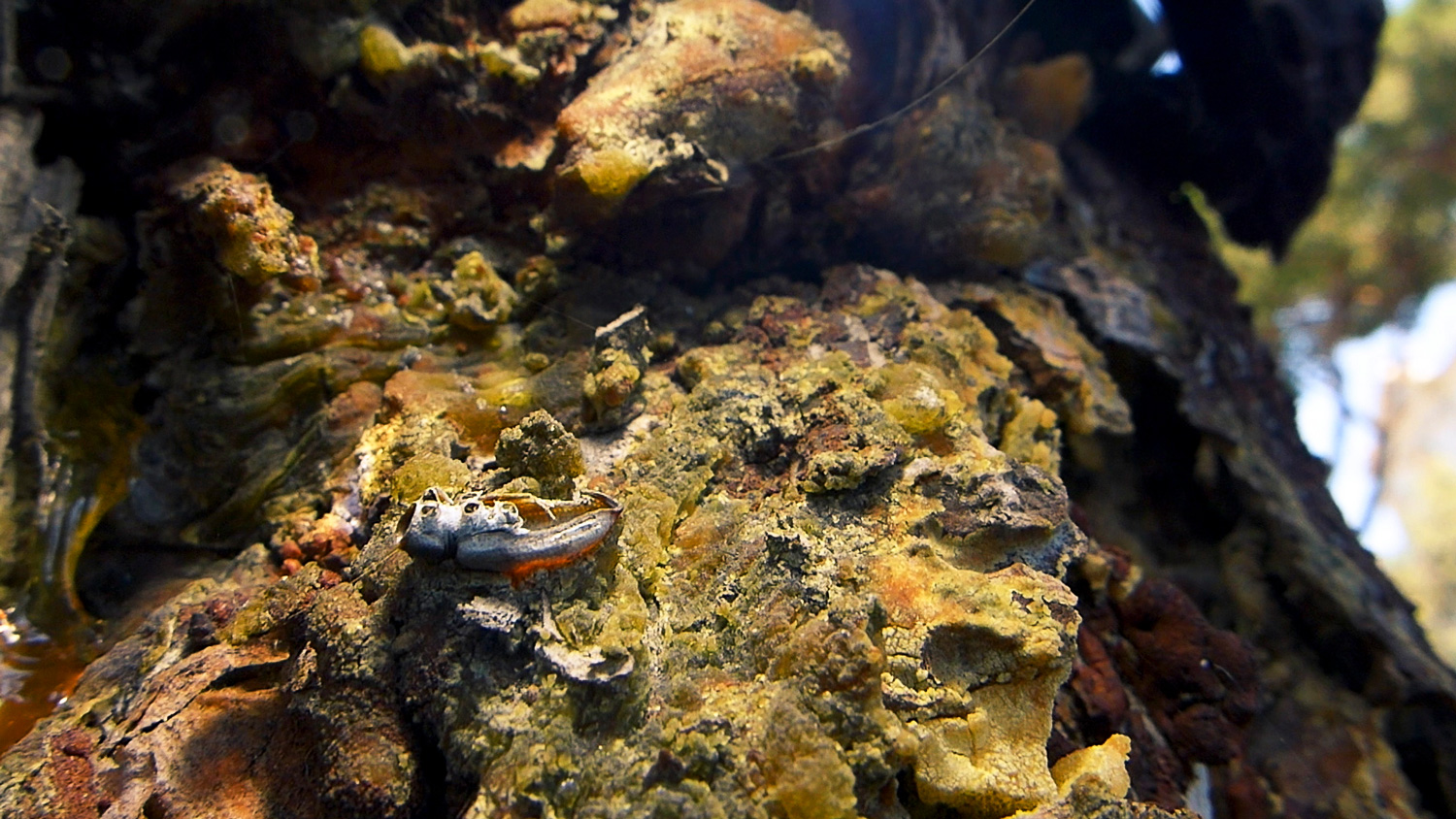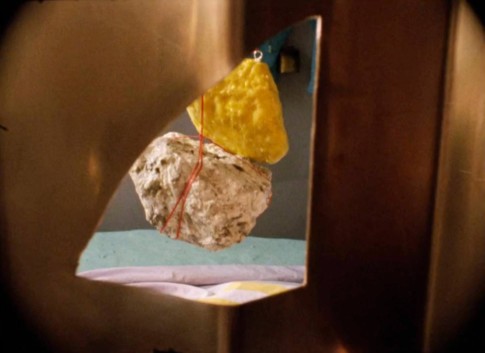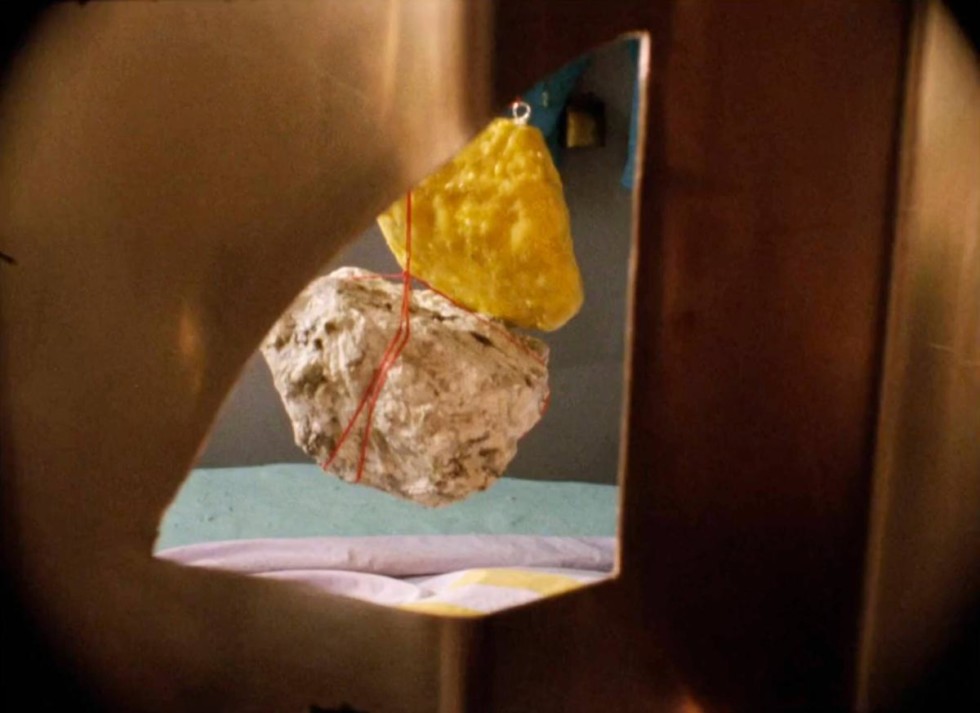
Tamara Henderson, The Spirit of Garfield (in spite of NH),, 2012
Previously in the Mini Cinema
February 2025–May 2025
Atlantis
by Christine Ödlund
Christine Ödlund’s soundless “Atlantis” (2009) reveals a submerged world of billowing plants and sunken architecture, where a few survivors remain in laboratories and bunkers beneath the surface. In its wake, we sense the aftermath of disaster, environmental crises, and melting polar caps.
“Atlantis” is based on scientific microscopic photographs in the spirit of the marine film-maker Jean Painlevé, whose credo was “science is fiction”. But our associations are also led in other directions – towards surrealism, mysticism and early science fiction. Christine Ödlund’s films, sound works and installations appear to listen in to a reality that lies beyond physicality.
The Spirit of Garfield (in spite of NH)
In Tamara Henderson’s films, everyday life is combined with dreamlike, poetic imagery. She takes her home environment as her starting point: her studio, her own apartment, clothes and furniture. The films are preceded by careful observation and sketching, the centre of the films are formed by physical objects – sometimes found, sometimes crafted.
“The Spirit of Garfield (in spite of NH)” is filmed in a single take and, with its elements of performance and theatre, becomes a kind of staging of the artist’s subconscious, while the absence of an acting person creates an enigmatic void.
Tamara Henderson searches for the logic of memory and dreams and has sometimes used hypnosis as a method to get beyond a habitual, casual way of seeing. With simple, fully visible means such as ropes, cords and gloved hands, the objects are set in motion in a choreography of the animated things themselves.
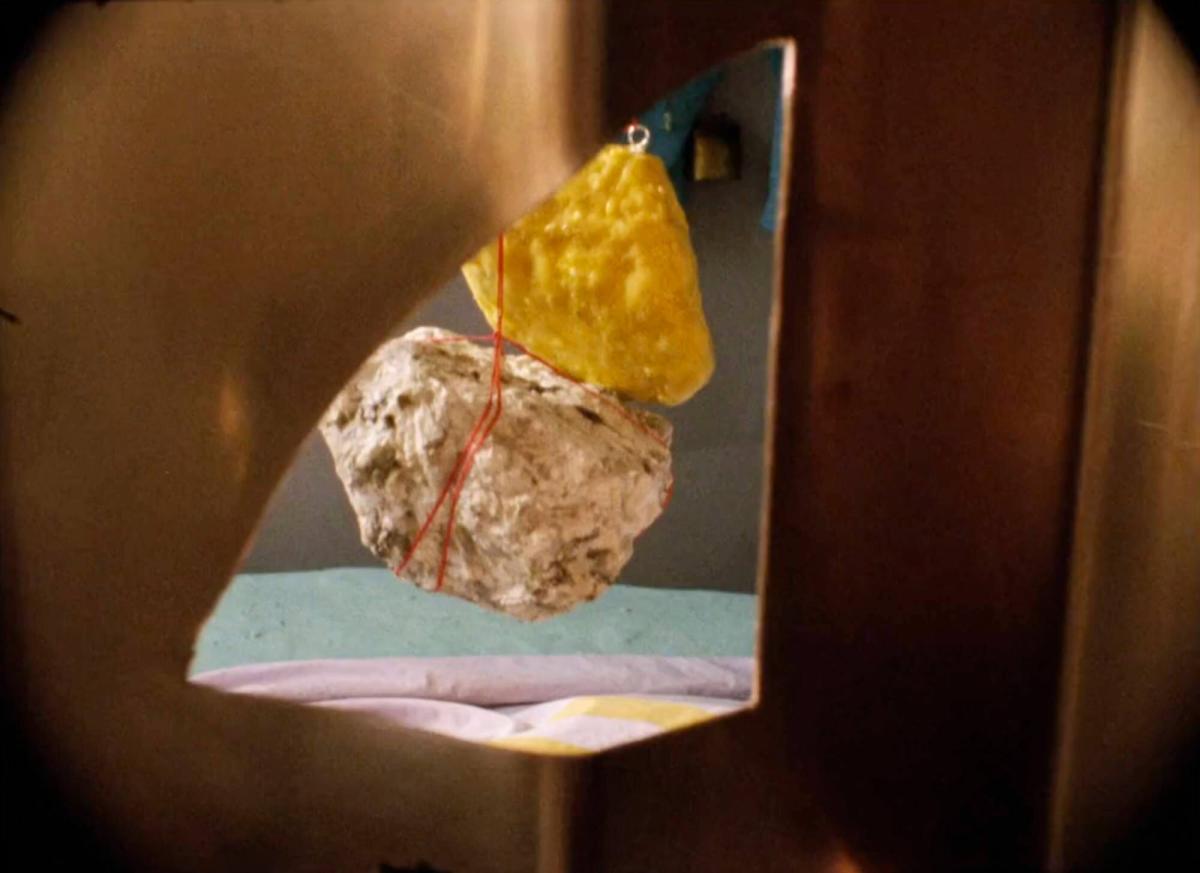
Killing Time (12 min, 2011)
For thirty years, Kent Klich (born 1952) has worked within a documentary tradition and is known for his photo books on Beth, the children of Nicolae Ceauseşcu’s Romania and El Niño. In 2001 he began travelling to Gaza, the conflict-ridden Palestinian territory occupied by Israel since 1967.
Through his work, Klich aims to raise awareness of the living conditions in the geopolitical area and the human rights violations taking place there. The project has also led to reflections on the difficulty of depicting human suffering and his own role as a photographer.
“Killing Time” (2011) adds perspective to the current humanitarian disaster in Gaza, where Israeli military action in response to the Islamist Hamas offensive in October 2023 has claimed the lives of tens of thousands of Palestinian civilians. With the fifth war in Gaza in 15 years, hopes for peace in the region are once again shattered.
“Killing Time” is one of a total of 373 new acquisitions that constitute the museum’s extensive project “Swedish Acquisitions 2021”.
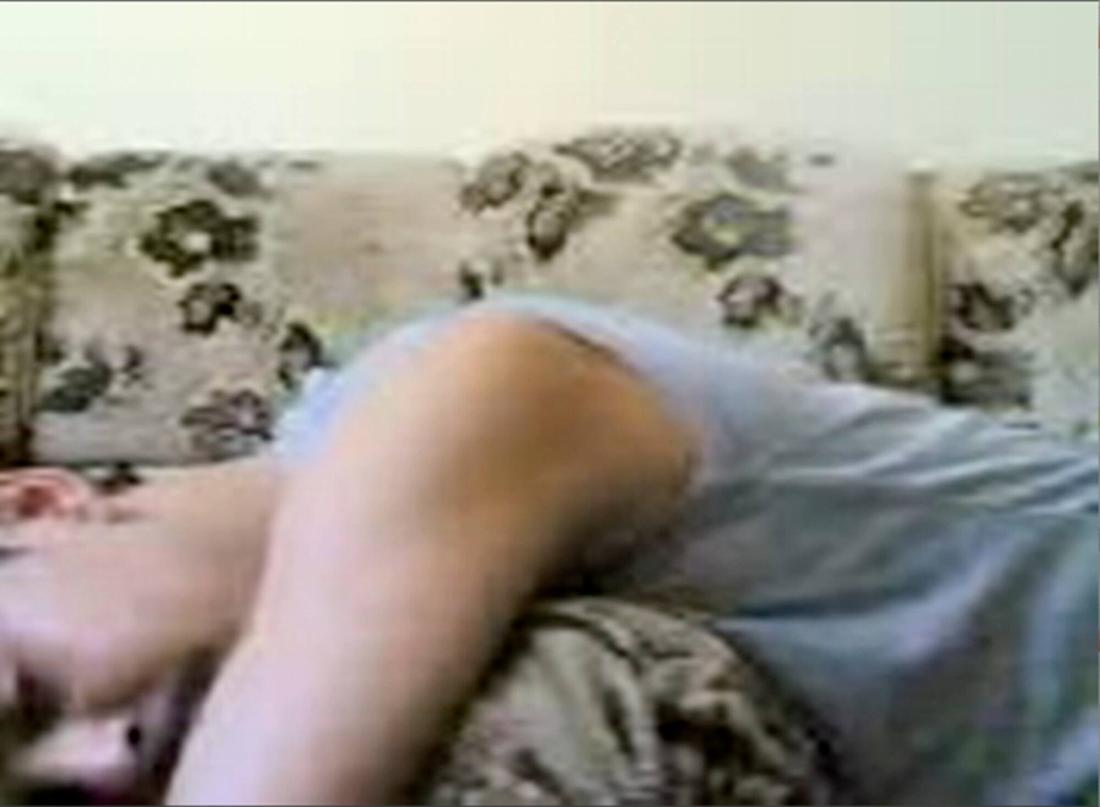
In Memory of a River (12:40 min, 2018-2020)
In the essay film “In Memory of a River”, artist Anja Örn looks to nature scenes in art history to find documentation of the lost waters that were used to build the Swedish nation during the early 1900s.
Who remembers the waterfall that stopped, the rapids that grew silent? When the exploitation of the rivers in Norrbotten began on an industrial scale in the early 1900s, their natural movements were manipulated with embankments and concrete dams. Around the same period, artists from the south travelled to Sápmi to paint rapids and waterfalls.
In the film Anja Örn reflects on the price of the wealth generated by water in motion. She turns to nature scenes in art history to find documentation of the lost waters that were used to build the nation, and which have also become an archive of memories. Who portrayed the river, whose gaze has shaped our collective memory?
“In Memory of a River” (12.40 min) is one of a total of 373 new acquisitions that constitute the museum’s extensive project “Swedish Acquisitions 2021”.
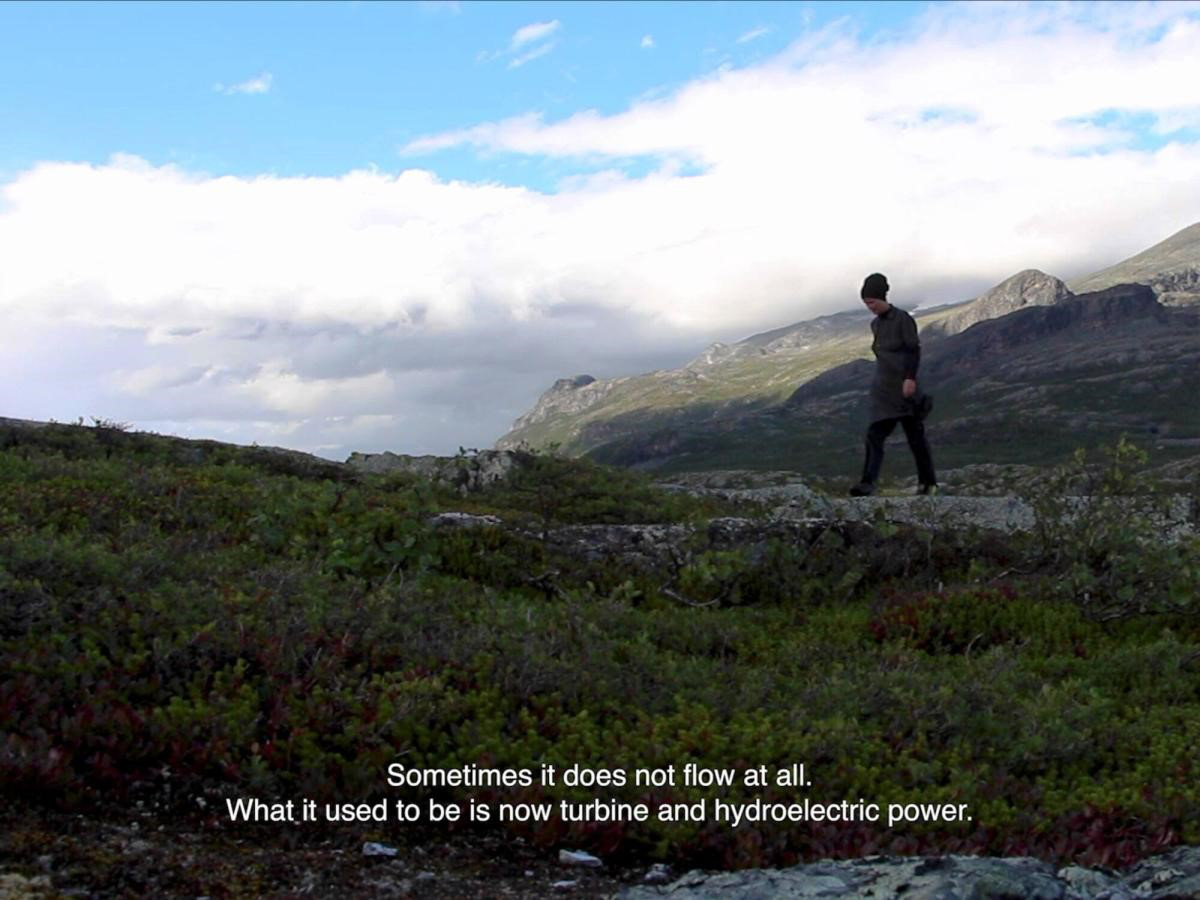
For Personal Reasons (28 min, 1972)
Madubuko Diakités “For Personal Reasons” from 1972 shows the marginalisation and radicalisation of a young man in New York in a time when the Black Panther movement was supported in American inner-city regions, particularly in response to racially targeted of police violence.
Diakité grew up in Harlem but came to Sweden in 1968, where he also worked as a human rights lawyer. Influenced by the French new wave, he explored film as a medium for political influence and social control.
Diakité taught revolutionary filmmaking – strategies for presenting counternarratives in the midst of reality, through and among the people concerned. His TV documentary “The Invisible People” (1972) is a unique documentation of the difficulties for new immigrants in Sweden, especially people from the African diaspora.
“For Personal Reasons” (28.14 min) is one of a total of 373 new acquisitions that constitute the museum’s extensive project “Swedish Acquisitions 2021”.
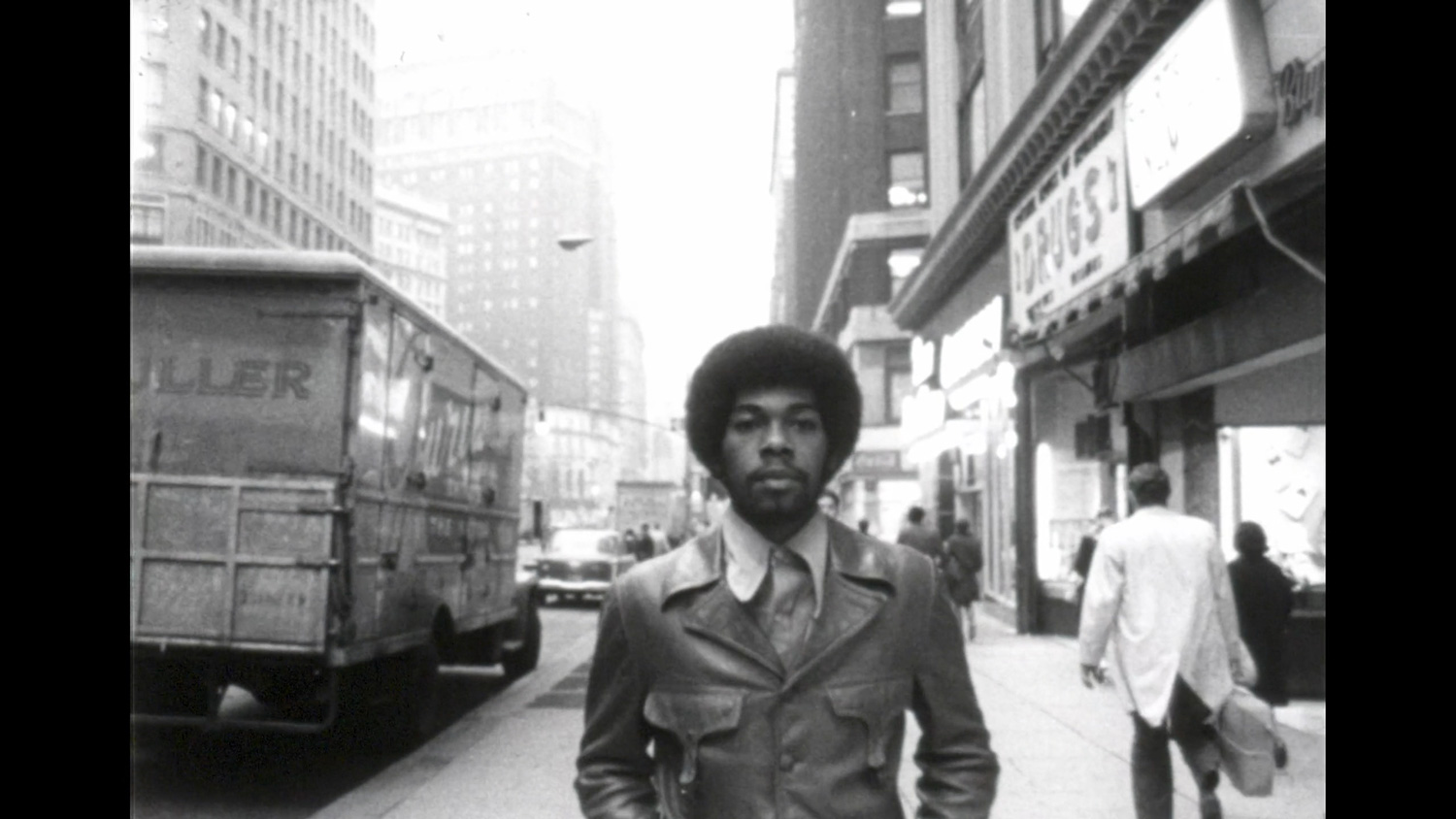
Close studies of Rome (7:23 min, 2017)
Through sculpture, video films and installations Oscar Furbacken (born 1980) frequently focuses on issues relating to the uncertainty of humankind’s fragile relation to the world around us. Which habitats will remain, and which will be lost? What are the criteria on which a civilisation depends?
In “Close Studies of Rome” (7:23 min, loop) Furbacken immerses the viewer in the world of Classical Rome’s sculptures and stonework, which is populated by primordial species of lichen, mosses and chasmophytes. Here, in the cracks between nature and culture, in the gaps between now and then, Furbacken’s probing and all-seeing camera reveals the indomitable resilience and energy of life.
The video is the third film in the artist’s ongoing project “Urban Microhabitats”, which investigates scale, perception and the effects of time in the micro-landscapes that surround us.
“Close Studies of Rome” is one of a total of 373 new acquisitions that constitute the museum’s extensive project “Swedish Acquisitions 2021”.
